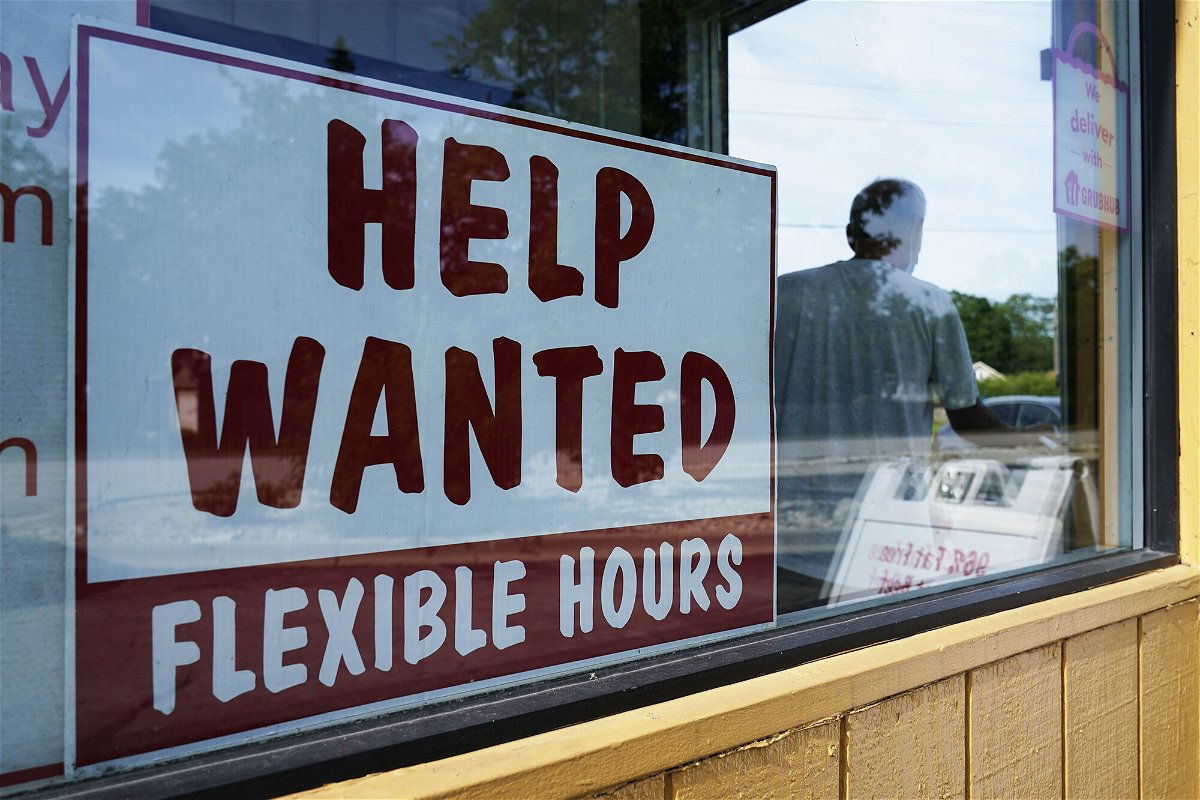What to expect from Friday’s jobs report

When the Bureau of Labor Statistics releases its latest monthly jobs report on October 7
By Alicia Wallace, CNN Business
When the Bureau of Labor Statistics releases its latest monthly jobs report on Friday, all eyes will be on whether the labor market is showing signs of loosening up — one of many crucial factors that will help the Federal Reserve determine its next steps in its fight against decades-high inflation.
The US economy is forecast to have added 250,000 jobs in September, which would be the lowest monthly jobs gain since December 2020. The unemployment rate is expected to hold steady at 3.7%, according to Refinitiv estimates.
August jobs data already indicated that the historically tight labor market has loosened by a notch. The jobs report for that month found that America added 315,000 positions, a much lower level than the 512,000 average job gains over the past 12 months. The number of open positions also fell, sinking by 1.1 million, the largest monthly decline outside of the pandemic, according to the Jobs Openings and Labor Turnover Survey released on Tuesday.
While first-time applications for weekly jobless benefits had been hanging around a four-month low, filings jumped back up on Thursday. First-time claims for unemployment insurance totaled 219,000 for the week ended October 1, an increase of 29,000, or 15%, from last week’s revised level of 190,000, according to new data released Thursday morning by the Department of Labor.
The weekly initial jobless claims numbers are preliminary and often subject to significant revisions. Continuing claims for the week ended September 24 were 1.36 million, an increase of 15,000 from the prior week’s revised level.
Job cuts are trending higher in recent months, according to the latest report from outplacement firm Challenger, Gray & Christmas. In September, US businesses announced plans to cut 29,989 jobs, an increase of 46% from August and almost 68% higher than this time last year. The retail industry accounted for nearly one-third of the cuts, Challenger said.
“Some cracks are beginning to appear in the labor market. Hiring is slowing and downsizing events are beginning to occur,” Andrew Challenger, senior vice president of Challenger, Gray & Christmas, said in a statement.
But while the hotly anticipated headline jobs number is falling, it’s still robust, BLS data shows. The monthly average prior to the pandemic was around 200,000.
The September employment report is also expected to reveal that average hourly earnings growth has decelerated to 5.1% in September, down from 5.2% in August. The Fed is closely watching whether a slowdown in demand for workers will also mute wage growth or whether pay gains remain high keeping upward pressure on inflation.
“The labor market went to 11 last year, and now it’s at a 9,” said Nick Bunker, head of economic research at Indeed Hiring Lab. “Things have declined, but it’s still pretty loud.”
‘A slow grind’
The Fed’s goal of achieving a soft landing — cooling demand to ease inflation without freezing the economy into recession — has grown increasingly unrealistic.
As a result, the Fed has shifted toward a “no pain, no gain” approach in its battle against inflation that could mean the unemployment rate climbs from 3.7% to at least 4.4% by the end of next year, according to the central bank’s own projections. Assuming no change in the number of people participating in the labor force, a jump in unemployment would result in at least 1.2 million workers losing their jobs, according to CNN Business calculations of BLS data.
Even if more workers joined the labor force, it might not be enough to balance that out, economists warn.
“It would be great if we had this soft landing and [job] openings did all of the work and inflation expectations did all of the work and there’s very little economic pain,” said Alex Pelle, US economist with Mizuho Securities. “That is certainly possible, but I don’t think that is the probable outcome.”
Despite persistent, sky-high demand for workers — especially in industries whipsawed by the pandemic and the sharp recovery that followed — labor force participation rates have remained stubbornly below pre-pandemic levels.
That’s mostly due to ongoing demographic trends, including the massive Baby Boomer generation aging out of the workforce, the acceleration of retirements during the pandemic, and others staying on the sidelines for reasons such as caregiving, health and restrictive immigration policies.
The unemployment rate will likely have to rise despite these downward demographic pressures, and that likely would have to come from people losing their jobs.
“It really might be a slow grind,” Pelle said. “It’s not going to be a happy slog. It’s not going to be a painless slow grind.”
The September jobs report is among the key economic data that Fed policymaking officials will review when they meet in early November to discuss how to stifle stubbornly high inflation. Thus far, the Fed has been battling surging prices by implementing a series of punishingly high rate hikes.
The-CNN-Wire
™ & © 2022 Cable News Network, Inc., a Warner Bros. Discovery Company. All rights reserved.